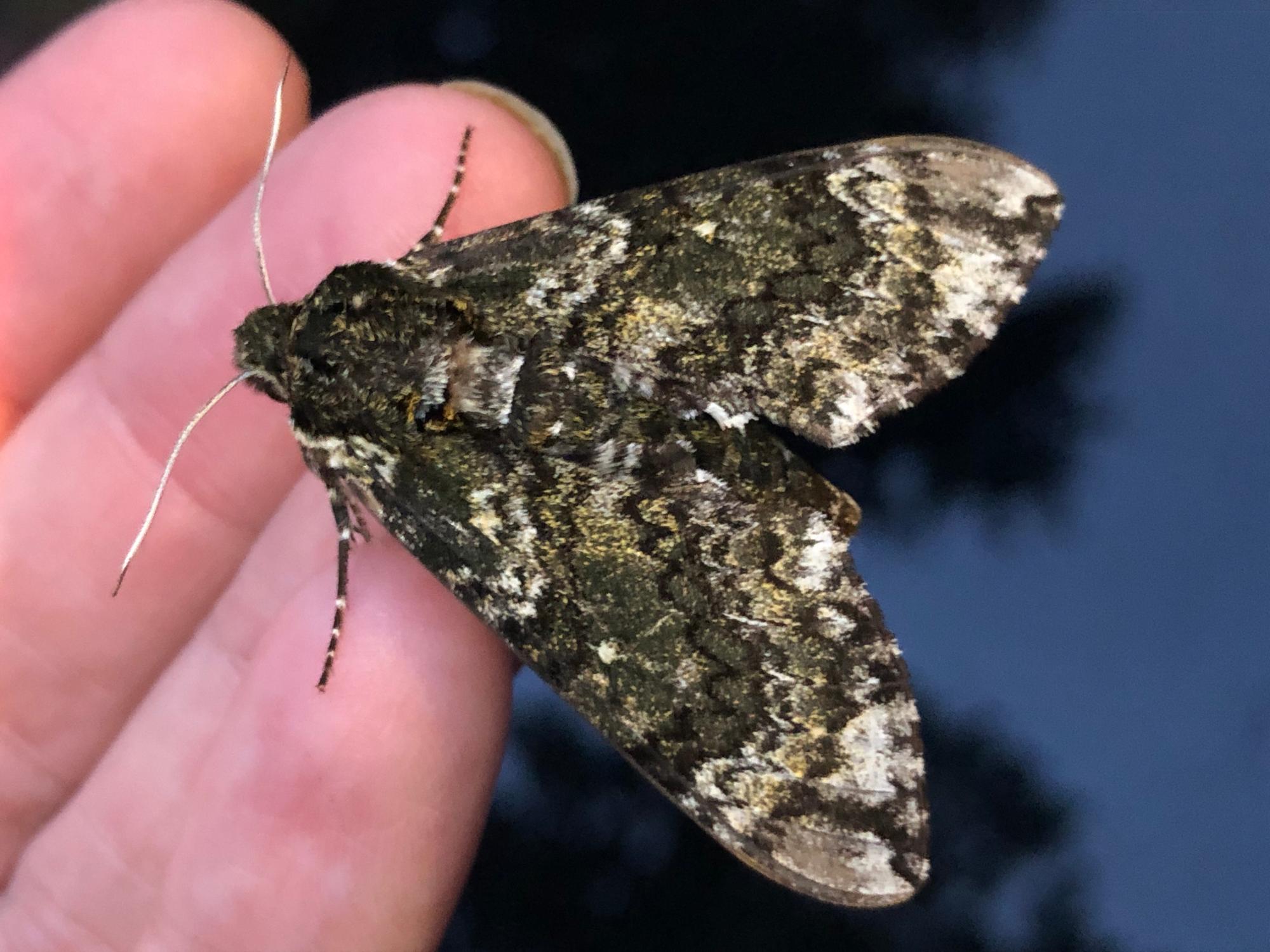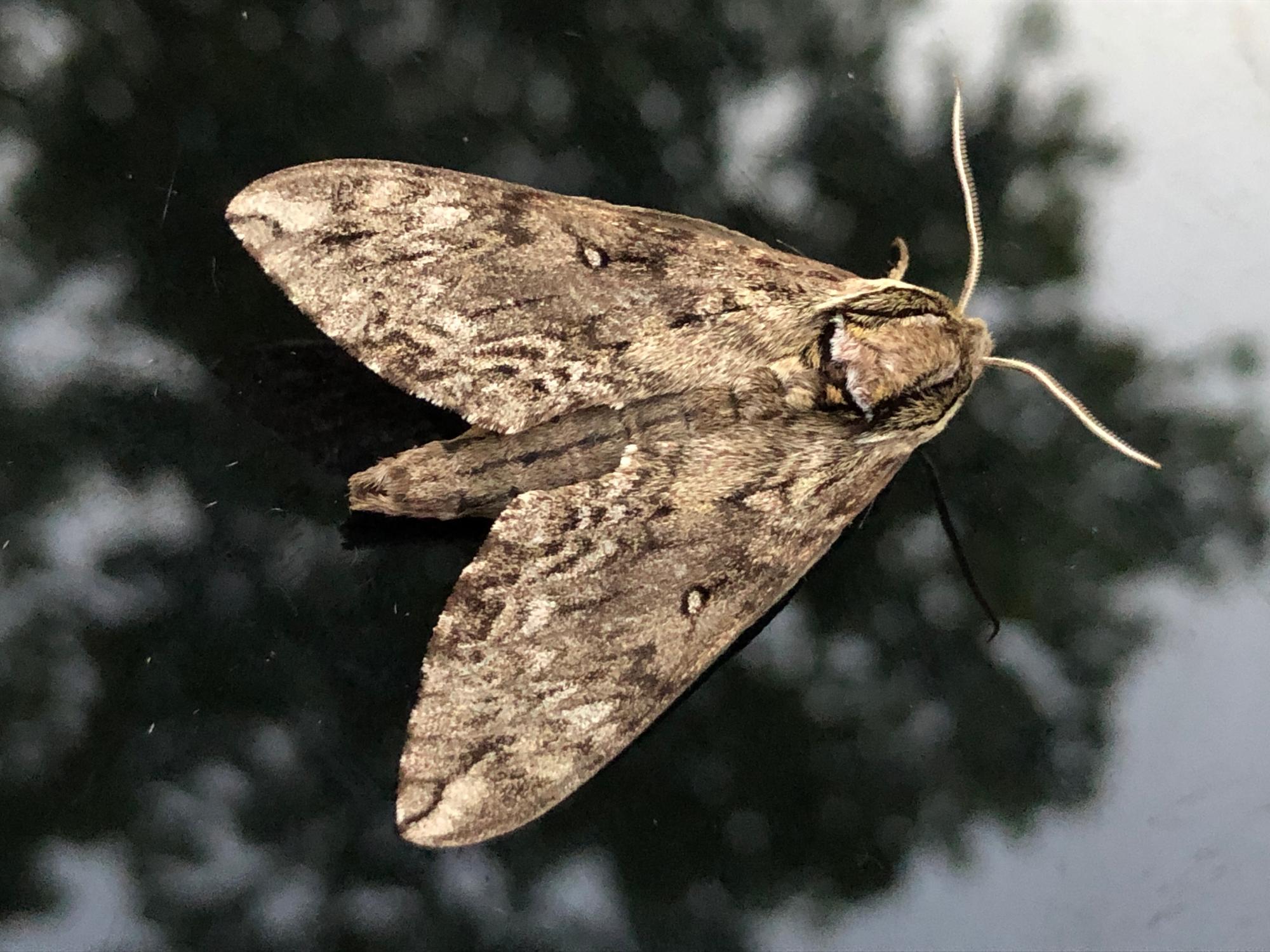SPHINX MOTHS GROUP #2: CAROLINA, waved, catalpa, TRUMPET VINE, ELM, HAGEN'S, AND PAWPAW sphinx
This is a Waved Sphinx moth. It is smaller than the Carolina Sphinx and does not have yellow spots on its abdomen.
I find Hagen's Sphinx moths at my UV lights from late May through early September.
Carolina Sphinx moths are very large insects. Their caterpillars feed on tomato plants, among other host plants. Many gardeners are disconcerted to find these large green caterpillars chomping on their tomato vines. Adult Carolina Sphinx moths fly from June through September.
Catalpa Sphinx. This moth is similar to the Waved Sphinx (above), but Catalpas are smaller and brownish rather than gray. Catalpa Sphinx moths also have fewer wavy lines on their wings than a Waved Sphinx, and the spots on a Catalpa Sphinx are filled with a dull gray or brown color. The spots on a Waved Sphinx moth (above) are filled with white.
This is a Trumpet Vine Sphinx, also known as the Plebian (or Plebeian) Sphinx. Notice the vertical black dashes on its wings. These moths are noticably smaller than Waved and Catalpa Sphinx moths. Plebian Sphinx moths are much less common then either of those two species. They feed on trumpet vines and hardy passionflowers (I have both in my yard). I have found a couple of these moths in July and August.
Catalpa Sphinx moths fly from May through early September.
Another Pawpaw Sphinx, photographed July 15, 2018. I have only found a couple of these moths at my lights.
This Waved Sphinx moth is more worn and faded than the fresh individual above.


This is a Pawpaw Sphinx, a fairly small sphinx moth that feeds on pawpaws and other plants. Photographed August 22, 2022.
This is a Hagen's Sphinx. These moths are somewhat similar to the other species on this page, but notice the pale markings near the wingtips. Also, fresh Hagen's Sphinx moths often have a faint greenish color.
Another Catalpa Sphinx. These are the most common sphinx moths at my lights during the summer.
Another Hagen's Sphinx. Their host plant is the Osage-orange tree. These moths come to my lights in good numbers. (I have a lot of Osage-orange trees near my house.)
Another Carolina Sphinx moth. These moths have six pairs of yellow spots on their abdomens. (Sometimes the sixth pair is small and hard to see.) A similar species, the Five-Spotted Hawkmoth, usually has five pairs of yellow spots instead of six.
Another Waved Sphinx. I have found this species in small numbers from late April through August.
This is an Elm Sphinx, the only one I have ever seen at my lights. Note the dark shading on the inner wing margins. Photographed on July 4, 2024.